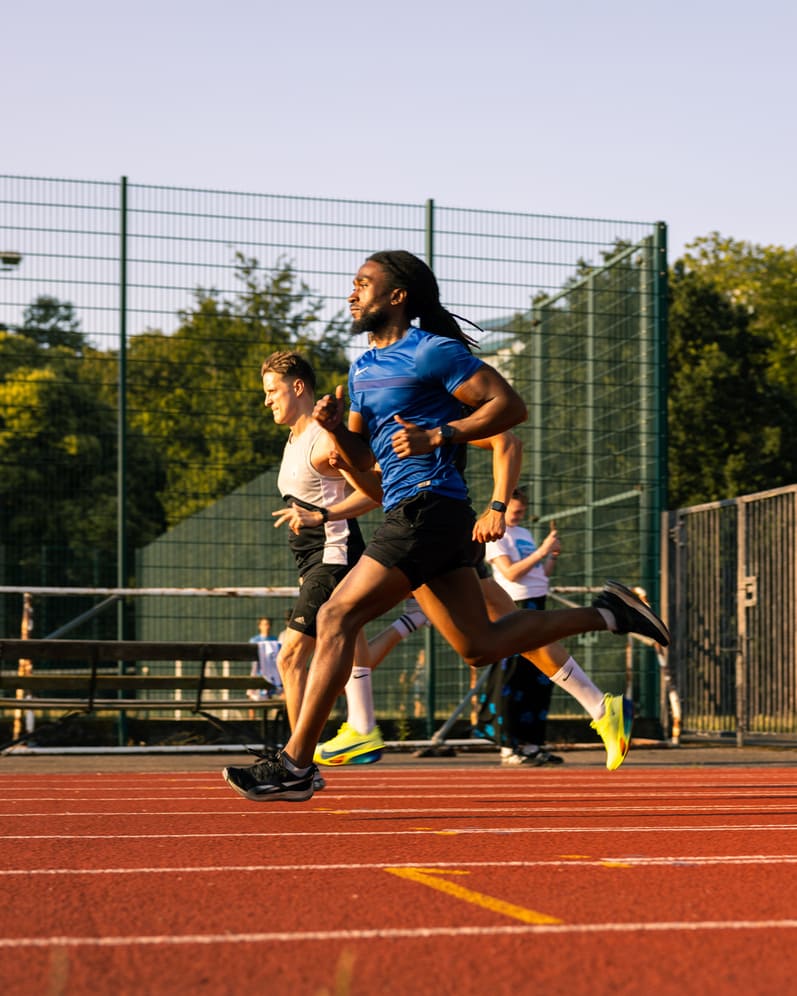If you’ve been trawling through running plans, listening to running podcasts, or eavesdropping on chats at your local parkrun, chances are you’ve heard the phrase “tempo run” more than once. But what is a tempo run, and why do so many runners swear by them?
Whether you're training for your first 10K or chasing a marathon personal best, tempo runs can play a powerful role in improving your speed and stamina. Here’s everything you need to know about tempo runs, plus some practical tips to help you work them into your training plan.
What Is a Tempo Run?
In simple terms, a tempo run is a sustained effort run at a “comfortably hard” pace. It’s not a sprint, but it’s definitely not a jog either. Think: challenging but doable.
Sometimes referred to as a threshold run, the goal of tempo running is to improve your lactate threshold, the point at which your body starts to fatigue more quickly from built-up lactic acid. The higher this is, the longer you can maintain a faster pace without slowing down.
Most runners do tempo runs at around 80–90% of their maximum heart rate, or the kind of pace you could maintain for an hour, think 10K to half-marathon, depending on your fitness level. You should feel like you're working, but not all-out, and still able to speak in short bursts.
Why Tempo Run Training Works
Tempo runs build stamina and mental toughness. They train your body to run more efficiently at faster speeds and push through that just-about-uncomfortable zone. Over time, this means:
- You’ll run faster with less effort
- Your aerobic capacity improves
- You’ll learn to hold your pace, even when tired
- Your training gains become more race-specific.
In short, tempo runs teach your legs and lungs to adapt to sustained effort, getting comfortable with being a bit uncomfortable. That might sound daunting, but that’s where the magic happens. Training at your threshold also boosts your body’s ability to process lactate, helping you feel stronger and more in control during longer races. And because tempo runs aren’t flat-out sprints, they build mental resilience without leaving you too sore the day after.
How to Add Tempo Runs to Your Training Plan
The beauty of tempo runs is that they don’t need to be overly complicated. Here’s how to start incorporating this type of endurance training into your weekly schedule:
Start with a Warm-Up
Always begin with 5–10 minutes of easy jogging, followed by a few dynamic stretches or strides. You want to get your body ready for the effort ahead.
Pick the Right Tempo Pace
Use your current fitness level or recent race results to find your tempo pace. Use a pace tracking app (like Runna or Strava) or just aim for a pace you could maintain for 45–60 minutes. A smart running watch or heart rate monitor can also help guide your effort zone.
Keep it Manageable
Start with shorter efforts, like 2 x 10 minutes at tempo pace with a 2-minute jog recovery between. Over time, you can build up to longer continuous runs (like 20–30 minutes at tempo) or sandwich your tempo effort between an easy warm-up and cool-down.
Don’t Overdo It
Tempo runs are challenging by nature, but they’re not supposed to leave you wrecked. Schedule them once a week, ideally with an easy day or rest day before and after.
Example Tempo Workouts to Try
Here are a few tried-and-tested tempo sessions for different levels:
Beginner: Intro to Tempo
- Session: 2 x 10 minutes at tempo pace
- Recovery: 2–3 minutes jog between
- With: 10-minute warm-up + cool-down
Intermediate: Steady & Strong
- Session: 20 minutes continuous at tempo pace
- With: 10-minute warm-up and cool-down
Advanced: “Tempo Sandwich”
- Session: 5 mins easy, 20 mins tempo, 5 mins easy
- Why: Great for race-pace rhythm and practising pace control.
Pro Tips for Nailing Your Tempo Run
- Use music or a metronome app to help you lock into a rhythm and stay there.
- Run by effort, not just pace - especially on hilly routes or windy days.
- Track your progress - see how your heart rate and effort improve over time.
- Fuel right - for longer tempo sessions, treat them like race day: eat beforehand and stay hydrated. Proper fuel means better performance and less risk of crashing mid-run.
Tempo runs are a key feature in many personalised training plans, including those from coaching apps like Runna. Whether you're building speed, stamina, or both, Runna’s structured sessions are tailored to your goals and running level. Ready to train smarter, not harder? Sign up with realbuzz today and gain exclusive access to Runna’s app.
Trust Tempo Run Training
Tempo run training is one of the most effective (and oddly satisfying) ways to build speed, strength, and confidence as a runner. They challenge you without breaking you, and they’ll teach you how to stay strong when things get tough, on race day and beyond.
Whether you’re a first-time 10K runner or chasing a new marathon PB, adding tempo runs to your training is a smart step toward running faster, better, and stronger. Ready to find your next challenge? Search for your next running event with realbuzz and make your miles mean more!
